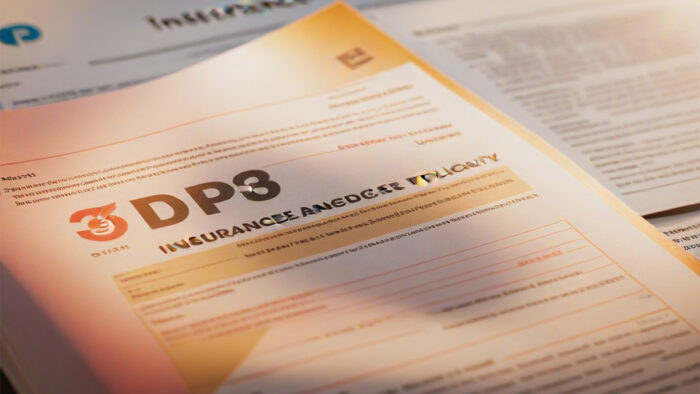Need a more comprehensive insurance policy for your property? The DP3 insurance policy offers more advantages than the previous dwelling property insurance. It offers qualifying coverage to home owners who seek protection against certain perils and unforeseen events. Your insurance provider can help customize your DP3 insurance policy to suit your needs and interests.

With a DP3 insurance policy, you can lessen the financial stress that comes with fixing older roofs or homes used as investment properties.
In this article, we will shed light on DP3 insurance policy, its distinctive features, exclusions, and other relevant information that would increase your knowledge about this insurance policy.
What is DP3 Insurance Policy?
A DP3 insurance policy is a type of insurance that guarantees all-inclusive coverage for different types of risks. Its comprehensive coverage feature offers peace of mind to policyholders who seek protection for their properties. It offers the best coverage compared to a DP1 or DP2 insurance policy.
This policy includes roof surfacing payment schedule endorsement that provides property owners with a major discount on their insurance rates. This endorsement helps cover the roof’s actual cash value when it is damaged by wind or hail.
Property owners can also customize their DP3 insurance policy by opting out of personal property coverage and adding fair rental income protection to their policy.
Summarily, DP3 insurance policy is one of the most comprehensive insurance policies that protects residential rental properties against damages and losses.
What It Covers
A DP3 instance policy offers coverage for the physical structure of your property. Policyholders can also add other coverage to fit their needs. Highlighted below is what a DP3 insurance policy covers:
- Damage to your personal property, like appliances and equipment in the home, like a garage, fence, or guesthouse.
- Medical payments for injured visitors.
- Personal liability.
Beyond the aforementioned coverage, a DP3 policy also covers vandalism, theft, loss from lightning, windstorms, hail, and any other risks specified in your policy. If these are not included in your insurance policy, it will not provide coverage for them.
What It Does Not Cover
A DP3 insurance policy offers comprehensive coverage and is considered to be the most renowned type of insurance policy on dwelling property, owing to the fact that it is written on an open-peril basis. Nevertheless, there are certain perils it does not include in its policy, such as:
- Ordinance or law.
- Flood or water damage.
- Power failure.
- Neglect
- War
- Nuclear hazard.
- Intentional loss.
- Governmental action.
- Mold
- Earthquakes
Although flood damage is often excluded under the DP-3 policy, there may be some insurance provided that offers specific coverage for flood damage.
You can also have certain policies in mind that you seek coverage for. You can ask questions from your insurance provider for clarity on what specific coverage they offer. Through this, you will be able to understand the blue print of its coverage and how it can be tailored to suit your needs.
How Do You Know if You Need a DP3 Insurance Policy?
You will need a DP3 policy for the following reasons:
- If you’re a property owner who intends to rent out a portion of your entire house because you will no longer live there.
- If you have an older roof, that makes it difficult to insure your property or home. Individuals with roofs 10 years of age or older should consider getting DP3 insurance, the reason being that older roofs can disqualify you from getting coverage from many insurance providers.
- If you seek protection for damages and high risks faced by priorities,.
- If you’re unable to cover the cost of repairs for damage done to your property,.
FAQs
What is the difference between DP1, DP2, and DP3 insurance policies?
DP1, DP2, and DP3 are distinct insurance policies that offer different coverage, each with an obvious feature that differentiates one from the other.
A DP1 insurance policy provides the minimal type of coverage for perils that affect properties and assets. DP2 provides broader coverage than DP1.
Perils that were not covered in DP2 are being included in DP1. On the other hand, DP3 offers the most comprehensive coverage that provides security for the sale on an open-peril basis, typically including all risks.
The coverage also depends on your insurance provider, so it is essential to review the coverage options and ask for the specific coverage so you can have a better understanding of the policy you intend to go for.
Is DP3 insurance only for rental properties?
No, you can use your DP3 insurance policy for other types of non-owner-occupied properties, such as second homes, vacation homes, second homes, and properties that are currently under renovation.
Can I get a DP3 policy if I live in the property part-time?
DP3 insurance policies work for properties that are not owner-occupied. Individuals who live in the property part-time will have to get a different type of insurance policy. You can obtain homeowners insurance policy for owner-occupied properties. This will provide protection for your property during your stay there.
We encourage that you review the specific coverage and policy terms with your insurance provider. The DP3 insurance policy largely depends on the insurance provider you’re getting it from, so it is important to always review the policy documentation. You can also consult an insurance agent to shed more light on the DP3 insurance policy.


